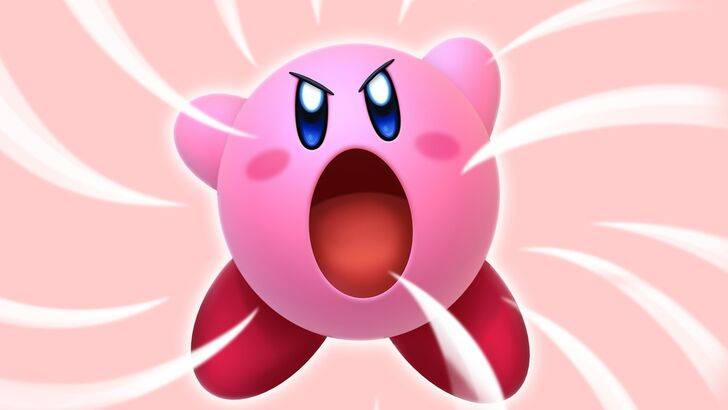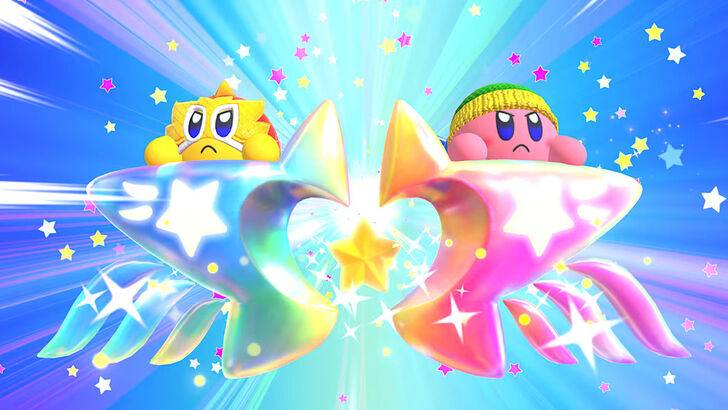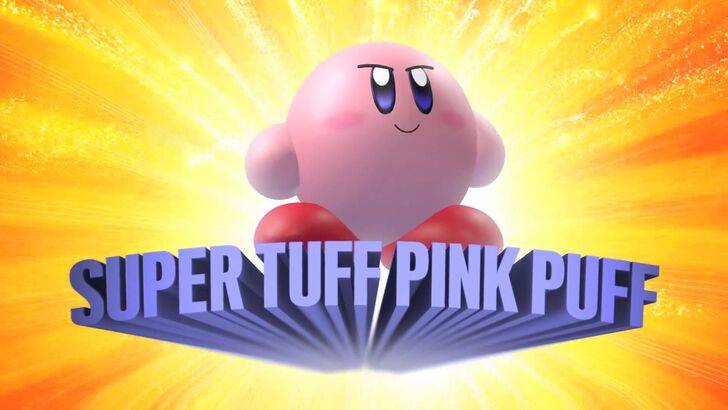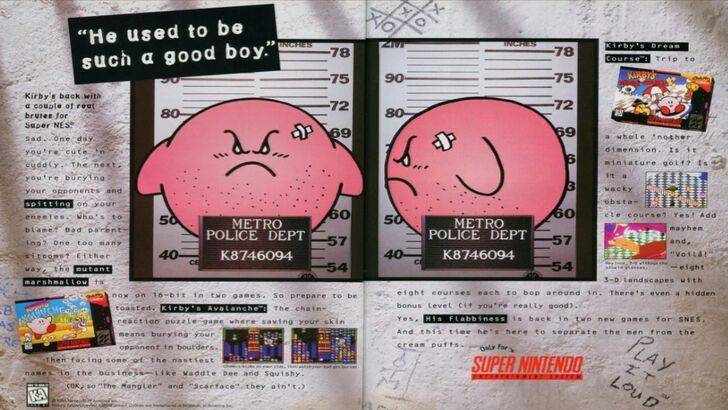
Discover the reasons behind Kirby's different appearance in the U.S. compared to Japan, as explained by former Nintendo employees. Dive into the details of Nintendo's localization strategies and how they tailored Kirby's image for Western markets.
"Angry Kirby" Was Made To Appeal To Wider Audiences
Nintendo Rebranded Kirby For More Appeal In The West

To resonate with American audiences, Kirby's image was transformed into a more determined and tough character on game covers and promotional artwork, earning the nickname "Angry Kirby." In a January 16, 2025, interview with Polygon, former Nintendo Localization Director Leslie Swan elaborated on the reasoning behind altering Kirby's look in the West.
Swan noted that while Kirby's cuteness was universally appealing in Japan, the U.S. market favored characters with a tougher edge, particularly among tween and teen boys. She stated, "Cute, sweet characters are popular among people of all ages in Japan. In the U.S., though, tween and teen boys tend to be drawn to tougher characters."
Kirby: Triple Deluxe Director Shinya Kumazaki, in a 2014 interview with GameSpot, emphasized that while Japan embraced Kirby's cuteness, the U.S. market responded better to a portrayal of Kirby as a fierce fighter. However, he acknowledged that the approach could vary by game, citing Kirby Super Star Ultra's tough Kirby on both U.S. and Japanese box art. Kumazaki highlighted the importance of showcasing Kirby's serious side in gameplay, while recognizing that Kirby's cuteness remained a significant draw in Japan.
Advertising Kirby As "Super Tuff Pink Puff"

Nintendo's marketing strategy aimed at broadening Kirby's appeal, especially to boys, led to the "Super Tuff Pink Puff" campaign for Kirby Super Star Ultra on the Nintendo DS in 2008. Krysta Yang, former Public Relations Manager at Nintendo of America, shared that there was a push to shift Nintendo's image away from being overly "kiddie." She remarked, "There was certainly a period of time for Nintendo, and even gaming in general, to have a more adult/cool factor. Having a game that was labeled ‘kiddie’ was really a curse."
Nintendo's efforts focused on emphasizing Kirby's combat abilities and toughness to avoid the perception of being exclusively for young children. In recent years, the focus has shifted to Kirby's gameplay and abilities, as evident in the promotional materials for Kirby and the Forgotten Land in 2022. Yang noted, "There’s been a continued push to make Kirby into a more well-rounded character, but it’s true that most people still regard Kirby as cute versus tough."
Nintendo’s U.S. Localization For Kirby

The localization of Kirby in the U.S. began with a notable shift in 1995, when a print ad featured Kirby in a mugshot as part of Nintendo’s "Play It Loud" campaign. Over the years, Kirby's box art varied, with games like Kirby: Nightmare in Dream Land (2002), Kirby Air Ride (2003), and Kirby: Squeak Squad (2006) showcasing a more aggressive Kirby with sharp eyebrows and stern expressions.
Beyond facial expressions, Nintendo adjusted other elements to make Kirby more appealing to Western audiences. The initial release of Kirby’s Dreamland on the GameBoy in 1992 featured a ghostly-white Kirby on U.S. box art, differing from the pink hue in Japan due to the GameBoy's monochrome display. This issue persisted until Kirby’s Adventure was released on the NES in 1993, where Kirby's original pink color was visible. Swan explained, "A puffy pink character for boys who are trying to be cool just wasn’t going to get the sales that everybody wanted."
This led to further adjustments in Kirby's U.S. box art to appeal to a broader audience. In recent years, Kirby's global advertising has aimed for consistency, alternating between serious and gleeful expressions.
Nintendo’s Global Approach

Both Swan and Yang noted that Nintendo has adopted a more global perspective in recent years. Nintendo of America now collaborates closely with the Japan office to ensure more consistent marketing and localization strategies, moving away from regional variations like the 1995 Kirby "Play It Loud" ad.
Yang commented on the shift towards global marketing, stating, "It was a business strategy change to have more global marketing. It’s good and bad. Being global means consistency for the brand across all regions, but sometimes there is a disregard for regional differences." She added that this approach could result in "really bland, safe marketing for some of Nintendo’s products."
Game localizers attribute the current trend of more uniform localization to the broader globalization of the gaming industry and the growing familiarity of Western audiences with Japanese culture, including games, movies, manga, anime, and other media.














